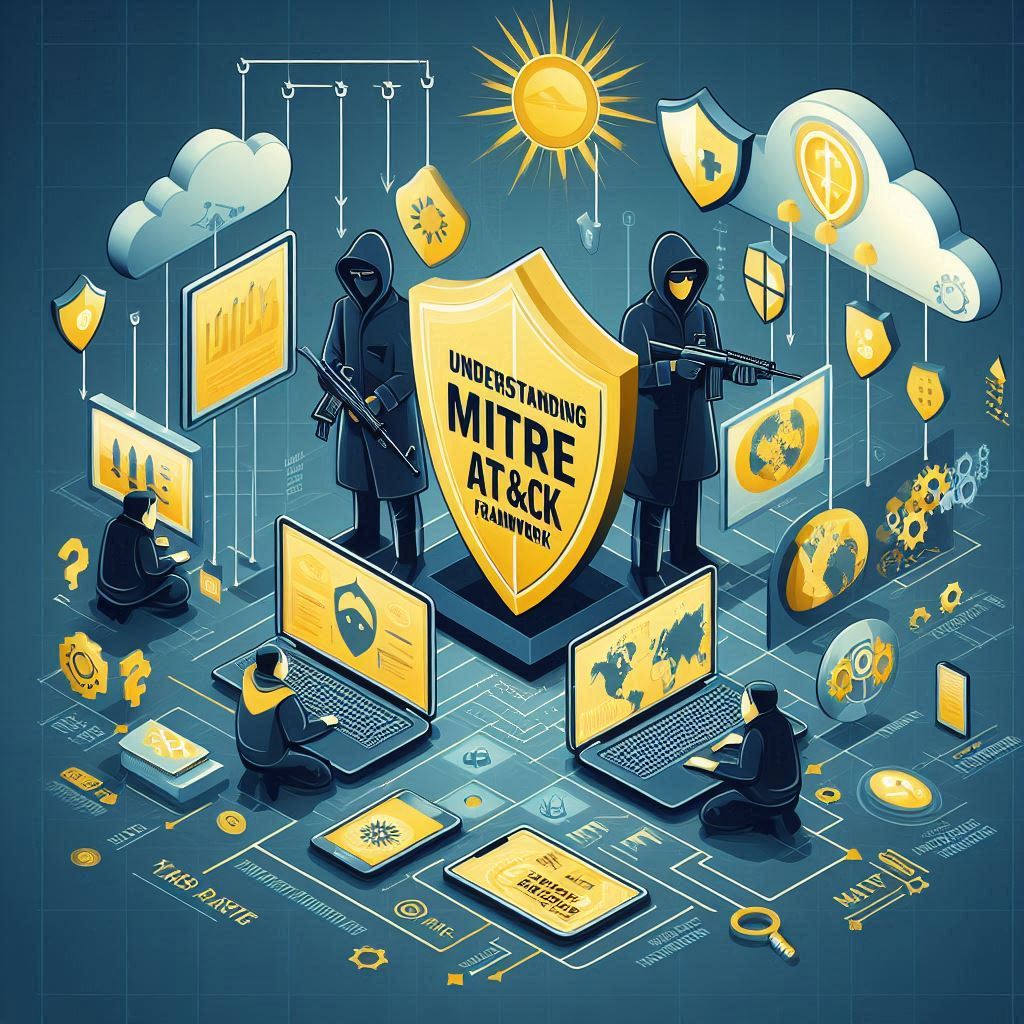Cybersecurity threats are evolving fast. Are you ready to defend your organization?
Whether you’re new to security or an experienced analyst, the MITRE ATT&CK Framework is one tool you must know. In this article, we’ll break it down in a user-friendly way — no complicated jargon, just practical knowledge.
🔍 What Is the MITRE ATT&CK Framework?
The MITRE ATT&CK Framework is a knowledge base of cyberattack behaviors. It helps security teams understand how real-world attackers operate — from how they get into systems to how they steal data or cause damage.
ATT&CK stands for Adversarial Tactics, Techniques, and Common Knowledge. It’s like a playbook of what attackers do and how they do it.
🎯 Why Should You Care About MITRE ATT&CK?
- Helps you detect attacks faster
- Improves your incident response
- Builds better security defenses
- Makes your red teaming and penetration testing more realistic
- Helps align your security strategy with real-world threats
🛠️ MITRE ATT&CK Tactics – The “What”
Tactics represent the goals of an attacker. Think of them as the “why” behind the attack steps.
There are 14 main tactics in the Enterprise ATT&CK Matrix:
- Initial Access – Gaining entry (e.g., phishing, exploiting public-facing apps)
- Execution – Running malicious code
- Persistence – Maintaining a foothold even after reboots
- Privilege Escalation – Gaining higher-level permissions
- Defense Evasion – Avoiding detection (e.g., disabling antivirus)
- Credential Access – Stealing login credentials
- Discovery – Learning about the system and network
- Lateral Movement – Moving across the network
- Collection – Gathering data
- Command and Control (C2) – Communicating with compromised systems
- Exfiltration – Stealing data
- Impact – Destroying or disrupting operations
- Resource Development – Setting up infrastructure for future attacks
- Reconnaissance – Gathering target information before launching attacks
🔧 MITRE ATT&CK Techniques – The “How”
Techniques are the specific methods used to achieve a tactic. Each tactic includes multiple techniques (and sub-techniques).
Examples:
- Under Initial Access: Phishing
- Under Credential Access: Brute Force or Credential Dumping
- Under Defense Evasion: Obfuscated Files or Information
Each technique is documented with:
- Description
- Detection ideas
- Mitigations
- Real-world examples
🔐 Real-Life Use Cases of MITRE ATT&CK
Here’s how companies and cybersecurity teams use the MITRE ATT&CK Framework:
- Blue Teams: Map detections to techniques to improve coverage
- Red Teams: Simulate real attacks using techniques from the framework
- SOC Analysts: Triage alerts and incidents with better context
- Executives: Use ATT&CK to align business risk with security operations
🧠 How to Start Using MITRE ATT&CK
- Explore the Enterprise Matrix
- Look for gaps in your existing security coverage
- Align your SIEM alerts, detection rules, and incident response plans
- Practice using attack simulations
✅ Final Thoughts
The MITRE ATT&CK Framework isn’t just for cybersecurity experts. It’s designed to help anyone who wants to understand how hackers think and how to stop them.
By learning its tactics and techniques, you can strengthen your defenses, detect threats faster, and respond more effectively.
Whether you’re building your own SOC, working as a freelancer, or training a new team — this framework is your ally in the fight against cyber threats.
👨💻 Ready to boost your cybersecurity strategy?
👉 Contact me today for expert consultation, training, or a custom session on using MITRE ATT&CK in your business.


